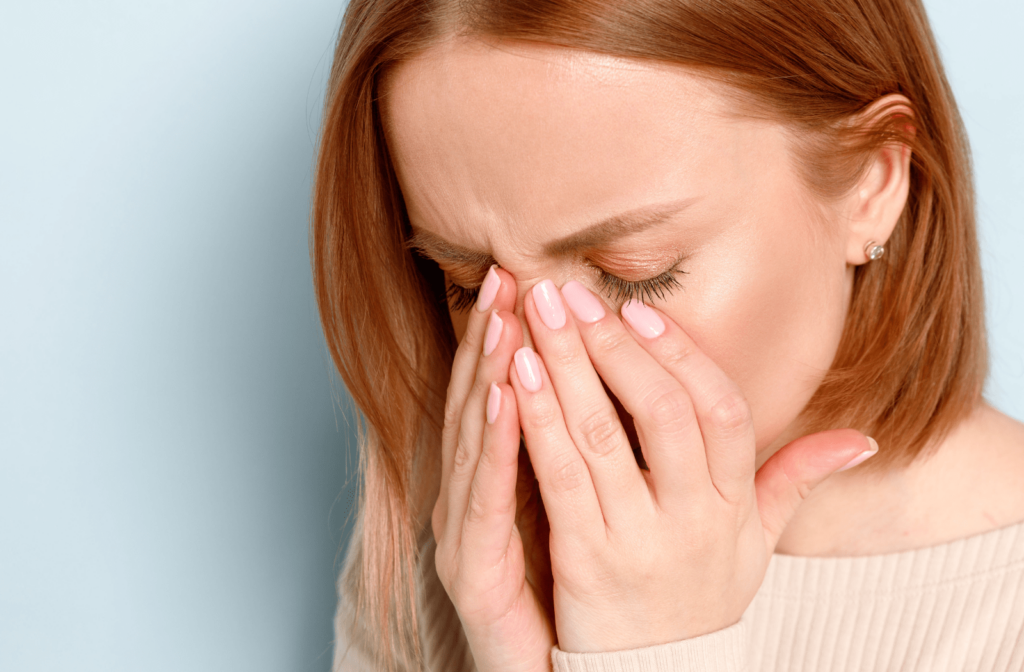Most people know of dry eye disease (DED) and the many accompanying symptoms. Mild dry eye disease affects 1 in 5 adults, but severe cases can impact the quality of life. A comprehensive eye exam is the first step to understanding this eye condition and finding the root cause.
It helps to determine what type of dry eye disease you have to find relief and treatment. Did you know that there are 2 subtypes of dry eye disease? One is evaporative dry eye, and the other, which we will look at in more detail, is aqueous tear deficiency (ATD).
Aqueous Tear Deficiency
Tears play a significant role in expressing emotions in some cases, but more importantly, in eye health. The tear film has the following 3 layers:
- Mucus layer: Acts like glue to keep the tear film on the eye and evenly coat it.
- Aqueous layer: Water produced by the lacrimal glands hydrates the eye and protects it from dust, dirt, and foreign particles.
- Lipid layer: Oil produced by the meibomian glands prevents tears from evaporating.
In aqueous tear deficiency, the lacrimal glands don’t produce enough water for the tear film to function adequately. The lack of water leads to an imbalance or unstable tear film or a concentrated (hyperosmolarity) tear film. This subtype accounts for one-tenth of dry eye disease.
Causes of Aqueous Tear Deficiency
Aqueous tear deficiency has several causes, including:
Age
Age-related ATD can result from chronic inflammation and thickened tear ducts that cause tears to accumulate in the lacrimal gland.
Health Conditions
Existing health problems such as HIV, Hepatitis C, sarcoidosis, and Sjogren’s syndrome can cause aqueous tear deficiency. In Sjogren’s syndrome, the disease targets the lacrimal and salivary glands leading to dry eyes and mouth.
Symptoms of Aqueous Tear Deficiency
The symptoms vary depending on the cause of aqueous tear deficiency, but common ones that develop include:
- Eye pain, redness, stinging: The most common symptoms of aqueous tear deficiency.
- Foreign material in the eye: The feeling of scratchy eyes with sand or dirt in the eyes.
- Blinking more with fewer tears produced
- Blurry vision and light sensitivity
- Has trouble wearing contact lenses
- Dry eyes are worse upon waking
How is Aqueous Tear Deficiency Diagnosed?
There are many similarities between aqueous tear deficiency and evaporative dry eye. However, as they result from different parts of the eye (meibomian and lacrimal glands), your optometrist can distinguish between them.
Since Sjogren’s syndrome is closely related to aqueous tear deficiency, if your medical history reveals this, your optometrist will know the cause. If Sjogren’s is not the cause, they will check your glands and test to measure how quickly your tears evaporate.
A tear osmolarity test checks the water quality in tears and the balance of input and output of the lacrimal system. Hyperosmolarity is responsible for the discomfort, inflammation, and in severe cases, ocular surface damage experienced in dry eye disease.
Treatment for Aqueous Tear Deficiency
Over time as this condition develops, people with aqueous tear deficiency need treatments so that it doesn’t affect their lives. If you are diagnosed with aqueous tear deficiency, there are several treatments to increase the moisture in your eyes. Treatment options include:
- Treat underlying health conditions that cause aqueous tear deficiency.
- Use preservative-free artificial tears to lubricate the eye’s surface for mild cases of aqueous tear deficiency.
- Medication to help glands produce more tears. Eye drops are non-steroidal and anti-inflammatory, such as cyclosporine.
- You can try eating foods high in omega-3 fatty acids or taking supplements. Always consult your doctor or optometrist before taking any supplements.
- Use plugs to block drainage holes in the inner corner of the eye to slow down tear drainage and keep what tears you have longer in the eyes. Plugs are usually temporary, and you can remove them at any time.
- Surgery is another option to close the drainage holes in the eyes. It is a permanent method to keep tears in the eyes for longer.
While treatment methods help to alleviate symptoms, there are other proactive approaches to maintain eye health. These include visiting your optometrist regularly, protecting your eyes from the wind, taking breaks when working in front of a screen, and blinking more often.
Find Relief from Aqueous Tear Deficiency
No one needs to live with the discomfort of dry eyes and aqueous tear deficiency. If you are experiencing any of the symptoms mentioned above, book an appointment with Higgins Brothers’ Vision Care today. We can get to the root of your symptoms and customize a treatment plan to meet your unique needs.




